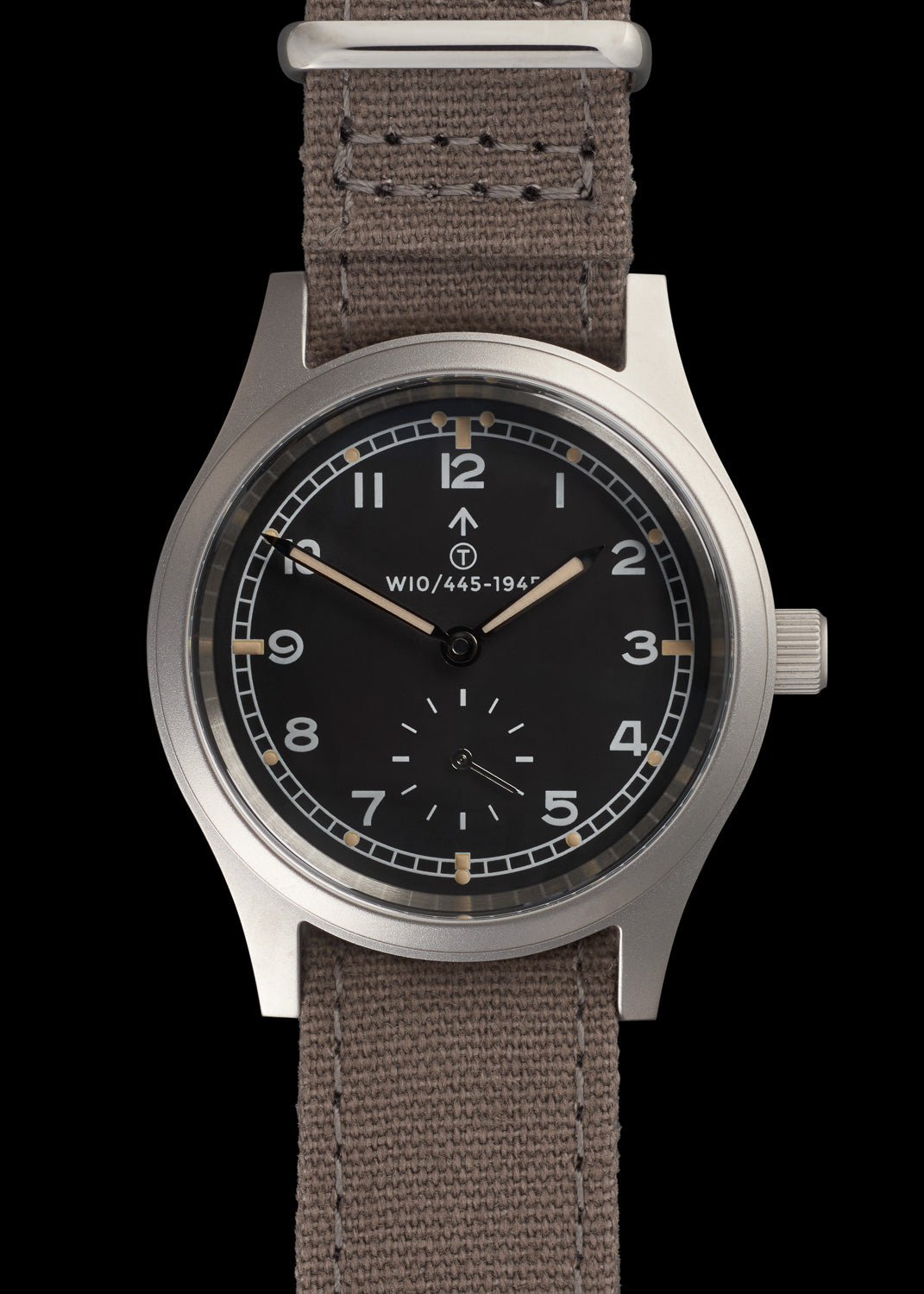
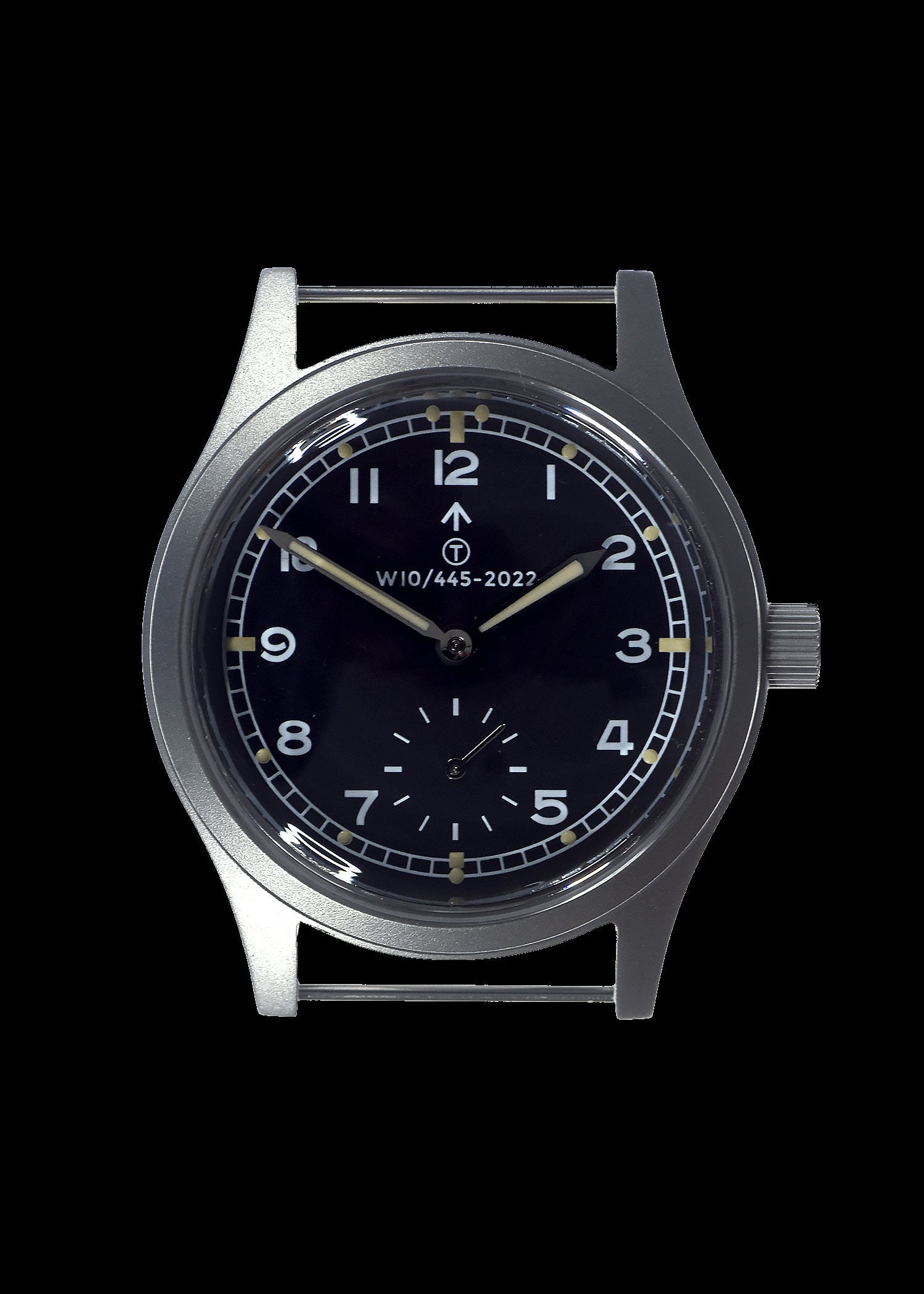
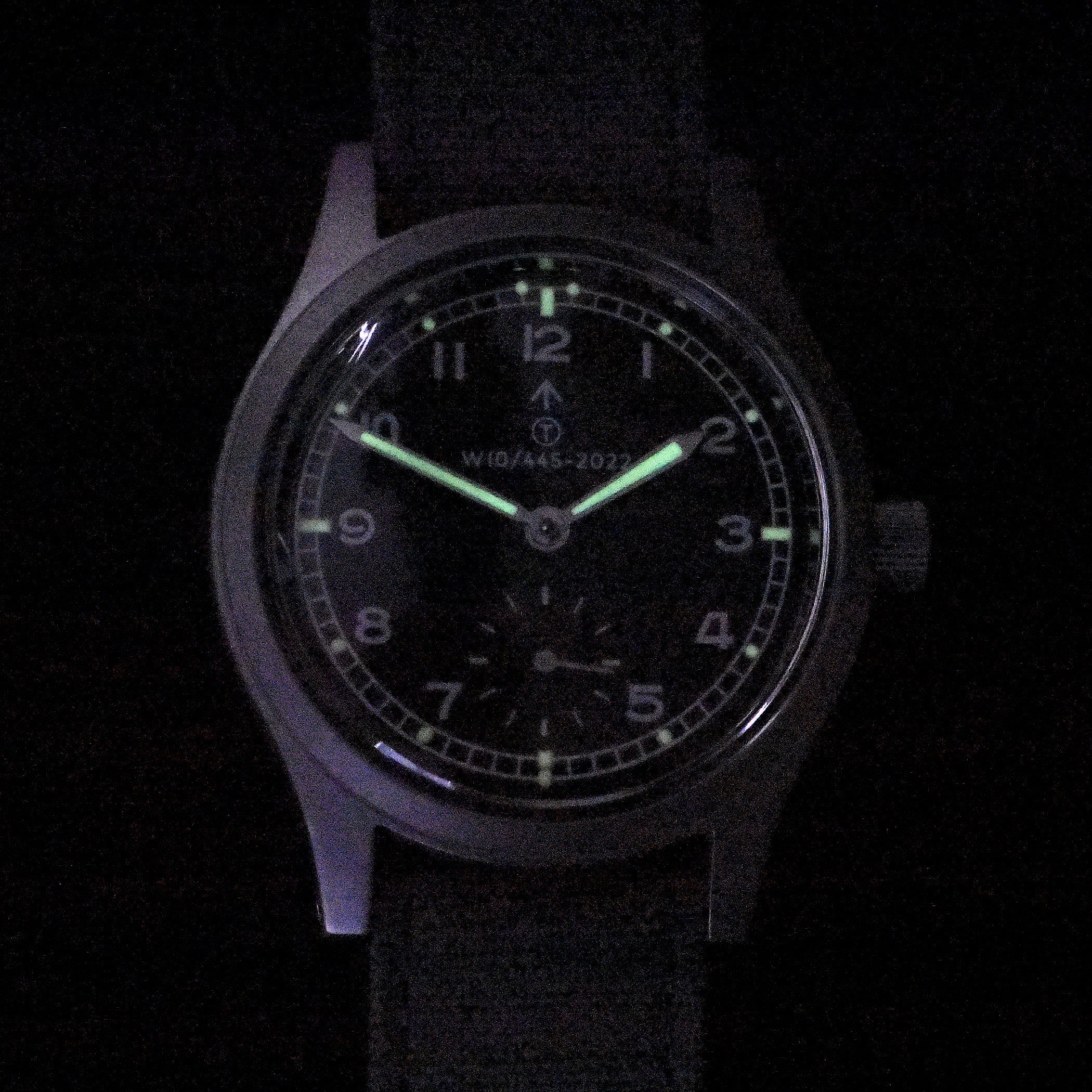
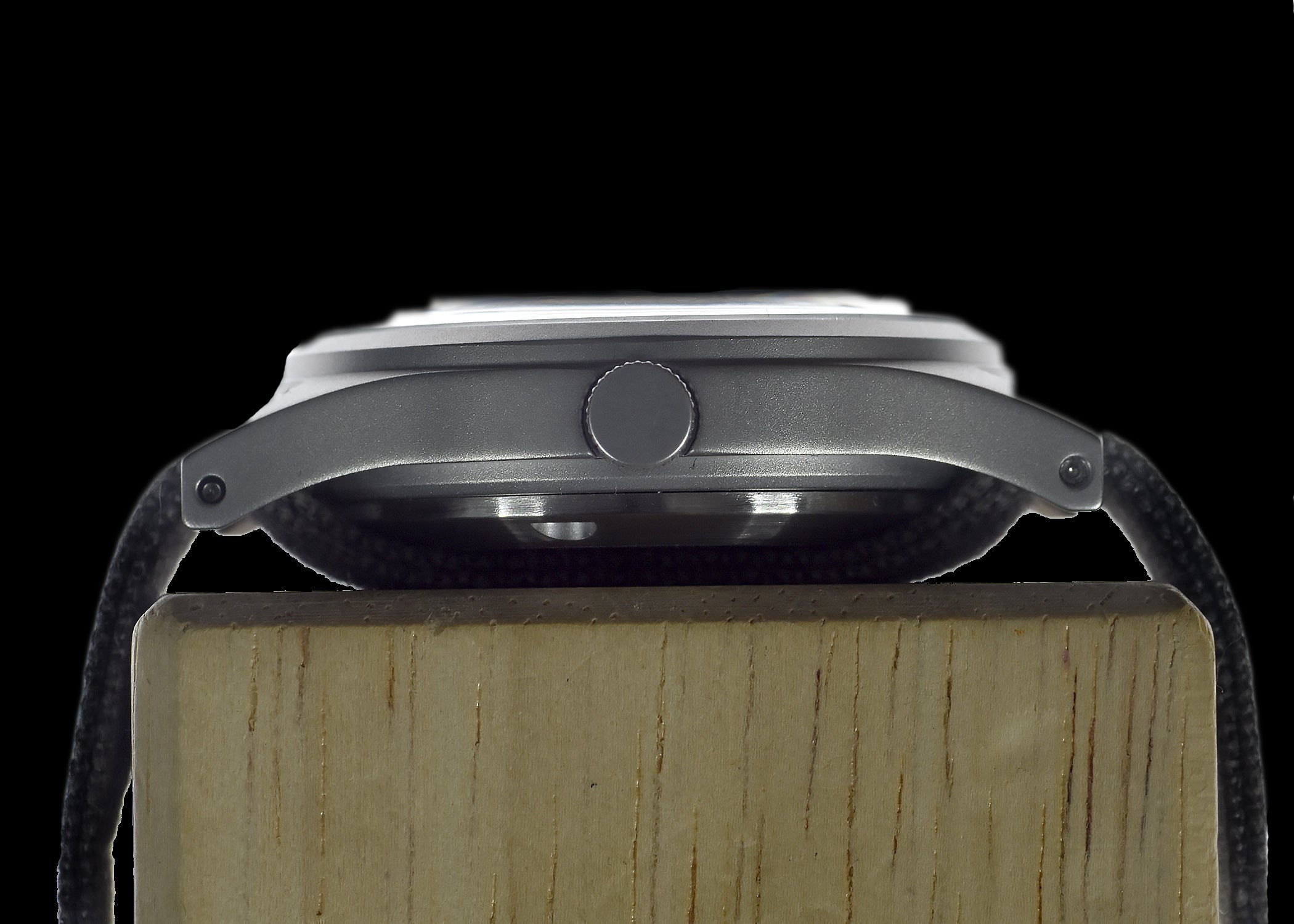
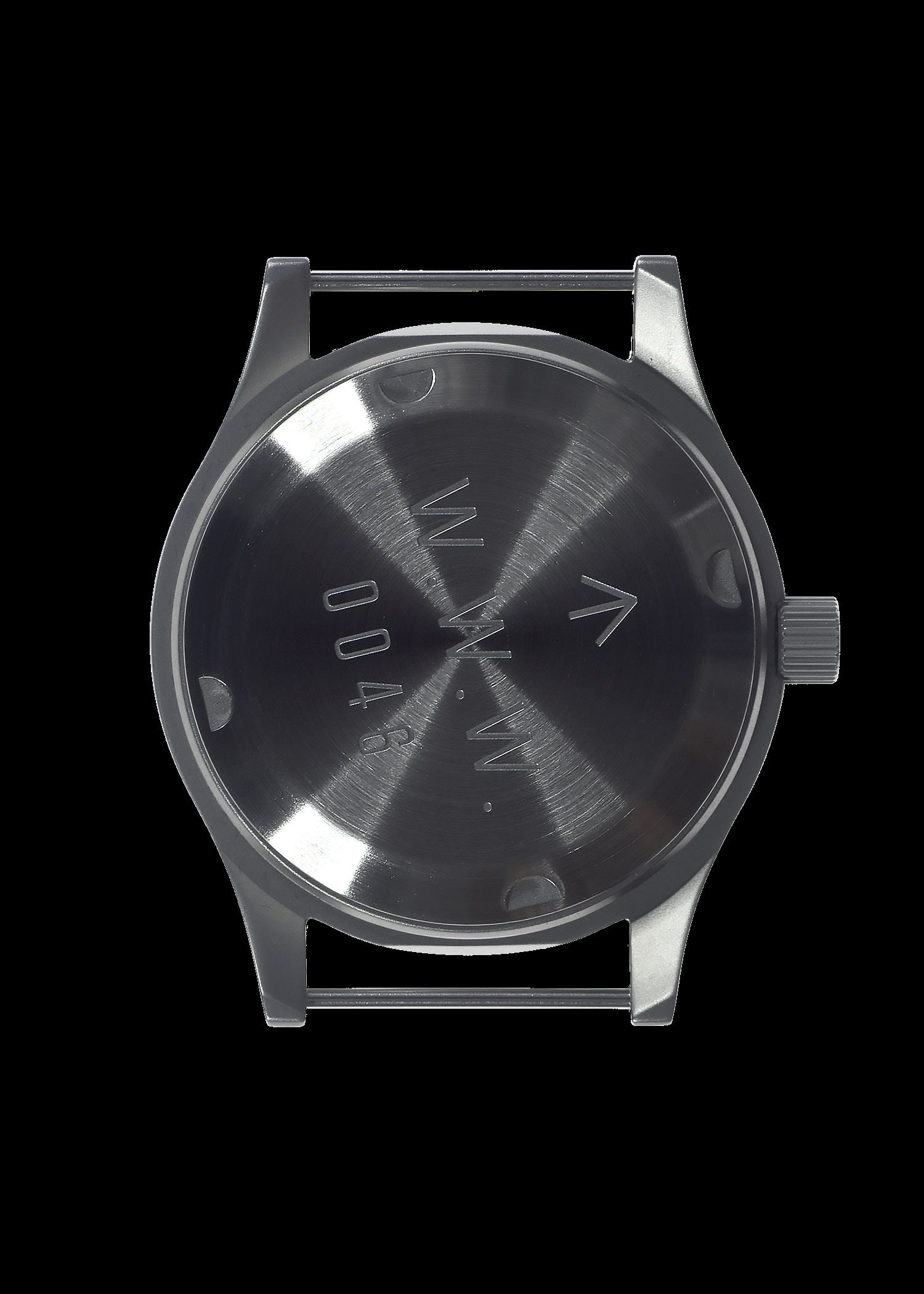
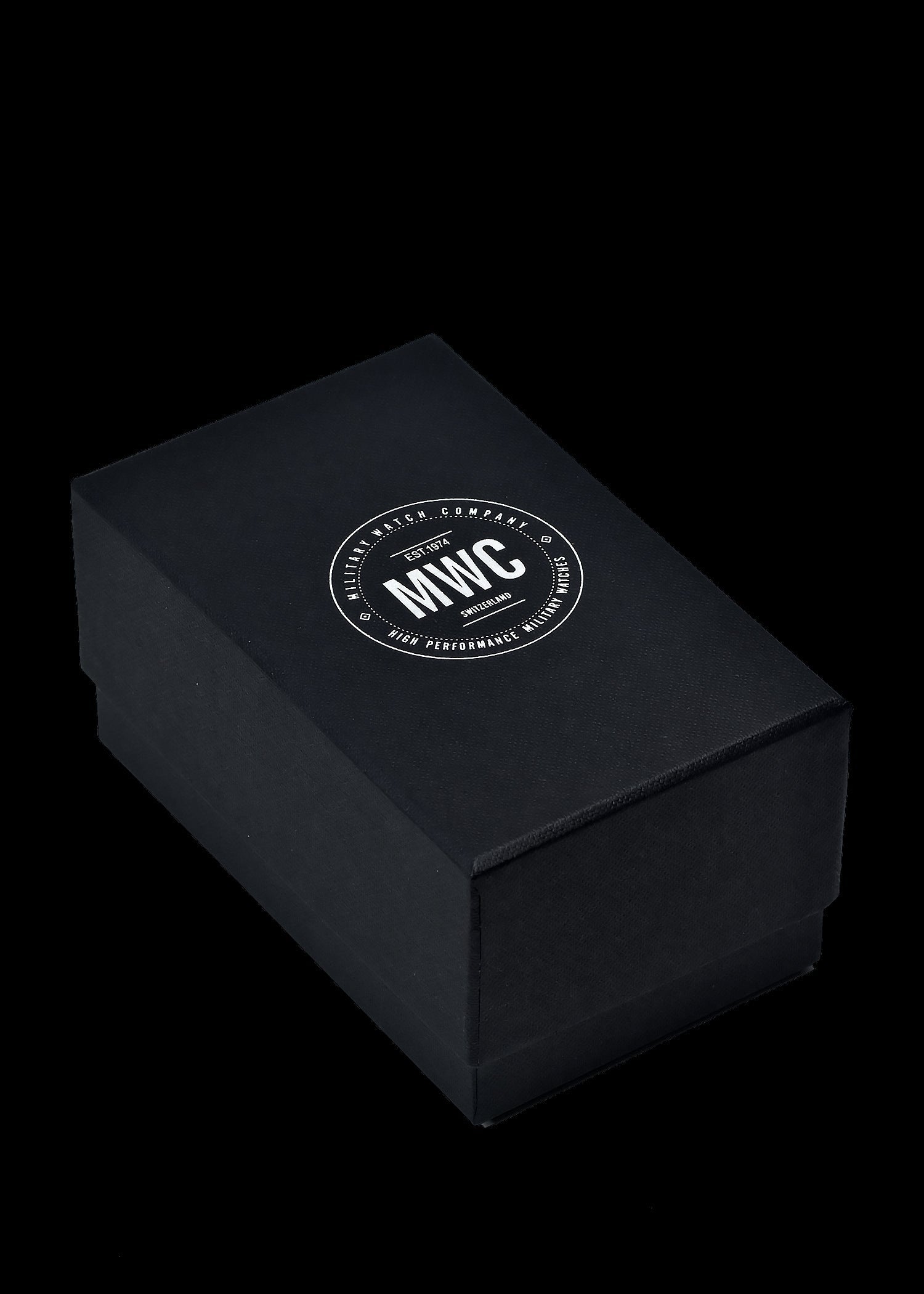
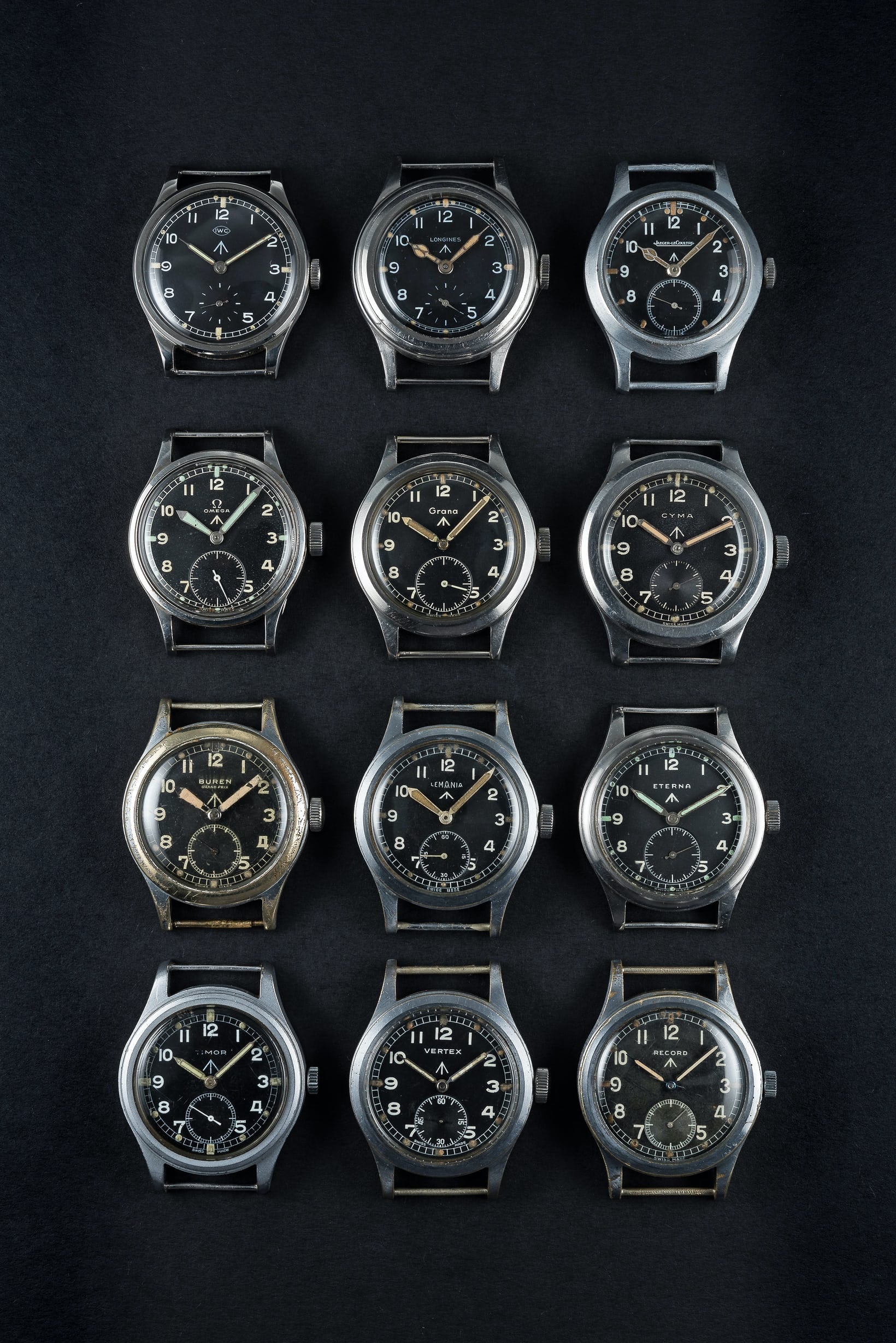
MWC 1940s/1950s "Dirty Dozen" Pattern General Service Watch with 24-Jewel Swiss Sellita SW216 Movement and Domed Vintage Box Sapphire Crystal
Description
SKU Code: W10/445-23CH
This classic hand-wound, 24-jewel MWC military watch, inspired by the 1940s/1950s design patterns, features a Swiss Sellita SW216 movement and a small subsidiary dial second hand. It retains the original appearance of the watches used by the British military during that era, while the improved water resistance of 100m (330 feet) and the shatter and scratch-resistant sapphire box crystal enhance its durability. Despite these enhancements, the crystal maintains the look of the original plexiglass without its drawbacks.
This watch boasts a heavy stainless steel satin finish case made from Military Grade 316L stainless steel, a subsidiary dial second hand, a screw-down crown, a hacking function, a black dial with luminous markings, and a historically accurate canvas strap reminiscent of the 1940s and 50s.
The final image showcases the original 12 watches produced by companies like Buren, Cyma, Eterna, Grana, Jaeger-LeCoultre, Lemania, Longines, IWC, Omega, Record, Timor, and Vertex. MWC, founded in 1974, was not among the original manufacturers but this watch captures the spirit of the originals.
Specifications:
- Case Diameter: 36.5 mm excluding crown, 39 mm including crown
- Lug to Lug: 43 mm
- Thickness: 12.5 mm
- Lug Type: Solid fixed strap bars
- Dial Color: Black
- Case Material: 316L stainless steel
- Caseback: 316L stainless steel
- Crown: Stainless steel screw-down locking crown
- Water Resistance: 100m / 330ft / 10 ATM
- Movement: Swiss hand-wound 24-jewel mechanical Sellita 216
- Crystal: Shatter and scratch-resistant sapphire box crystal with anti-reflective coating
- Luminous Material: Luminova
- Serial Number: Engraved on caseback
- Strap: 18 mm 1950s pattern canvas
- Packaging: Supplied in a box
- Guarantee: 24 months
The final image shows the original 12 watches made by companies such as Buren, Cyma, Eterna, Grana, Jaeger Le-Coultre, Lemania, Longines, IWC, Omega, Record, Timor, and Vertex. While MWC was not a manufacturer at the time, having been founded in 1974, this watch captures the spirit of the originals.*
* Photo Credit: Watches Of Knightsbridge
For anyone interested in the history of the Dirty Dozen these links show the 12 original watches and explain the history.
Benefits of Sapphire Crystal:
Many people ask about the advantages of sapphire crystal over the original plexiglass. Synthetic sapphire is the superior material for watch crystals due to its strength and resistance to shattering and scratching, making it ideal for military and security personnel, police officers, and active outdoor enthusiasts, who comprise over 70% of our customers. The original plexiglass crystals, made of plastic/acrylic, were prone to scratches and cracks and limited the water resistance of the watch. In contrast, sapphire crystals are heat-treated to eliminate internal stresses, enhancing durability. Two layers of anti-reflective coating are then applied. Although sapphire crystal is more expensive, it is typically found only in higher specification watches.
Swiss Sellita SW216 Movement Winding Guidelines:
To wind the SW216 from an empty state to full, you'll need approximately 20 to 25 turns of the crown, which is significantly less than most other hand-wound watches that require 30 to 40 turns. Once fully wound, the watch has an average power reserve of around 42 hours. Be cautious during the winding process, as securing the locking crown adds an additional 3 to 4 winds. This feature, designed to enhance water resistance, is uncommon in most hand-wound watches of this type.
For daily wearers who wind the watch every morning, a slight variation in the number of turns will not significantly impact the power reserve, as it will remain well below the maximum of 42 hours. Some users report that 15-17 turns are sufficient when winding every 24 hours, which is logical since the watch wouldn’t need a full wind after 24 hours. Most owners develop a sense of the optimal winding routine within the first few days of ownership.
It's crucial not to overwind the watch, as this can cause the mainspring to lock up or break. Overwinding occurs when a mechanism is wound beyond its designated stopping point, posing a risk of damage. Adhering to the recommended winding procedures ensures the longevity and proper functioning of the timepiece. Note that overwinding is a concern primarily for manually-wound watches, not for automatic ones, which cannot be overwound.
Europe, UK, and Rest of World
Tracked Mail:
- Europe: €11.75 / £9.99 / US$12.95
- UK: £7.95 / €9.50 / US$10.50
- Rest of World: US$22.75 / €20.50 / £17.50
Express Courier (UPS or FedEx):
- Europe: €23.50 / £19.99 / US$25.95
- UK (UPS/DPD): £12.95 / €15.25 / US$16.95
- Rest of World: US$45.50 / €41.25 / £34.95
Note: The exact shipping cost may vary slightly depending on the weight and dimensions, but it will only differ by a small amount and will be shown at checkout. The above rates cover approximately 85% of parcels.
For more details click here
If you are not satisfied with your purchase or it does not meet your requirements, you can return it within 14 days of receipt. The item must be in its original condition and packaging. To return a watch, please notify us using the form at the link below.
Please note that the watch, strap, or other purchased item must be in new and resalable condition. The returns policy will not apply if the item has been worn, the plastic protectors on the dial and/or caseback have been removed, or if there are other signs of usage, such as a worn strap. Essentially, the goods should not have been used beyond what would be expected if you had handled or examined an item in a shop before purchase.
To request a return authorization number, please visit this link.
Read our full returns policy here









MWC 1940s/1950s "Dirty Dozen" Pattern General Service Watch with 24-Jewel Swiss Sellita SW216 Movement and Domed Vintage Box Sapphire Crystal
